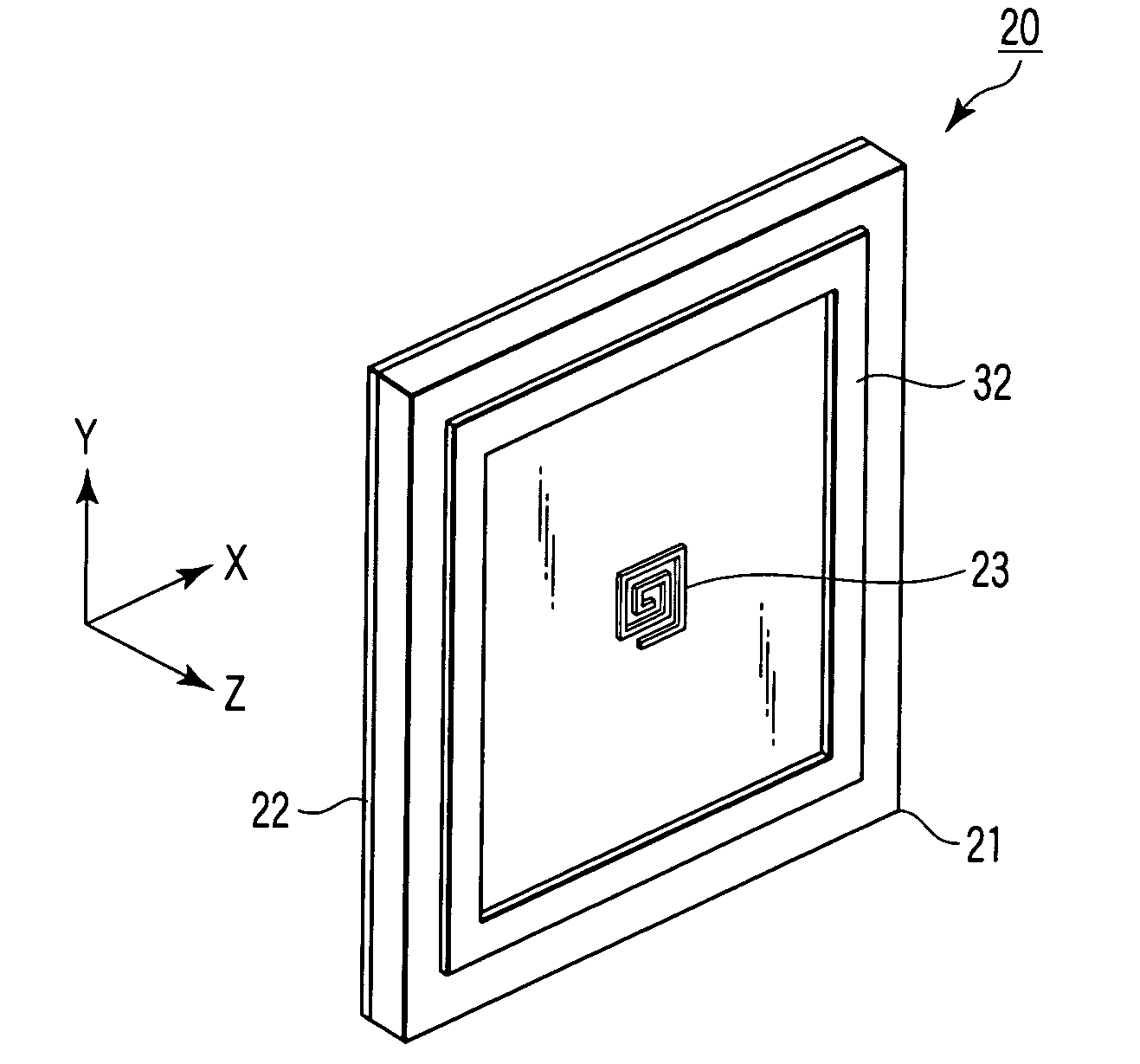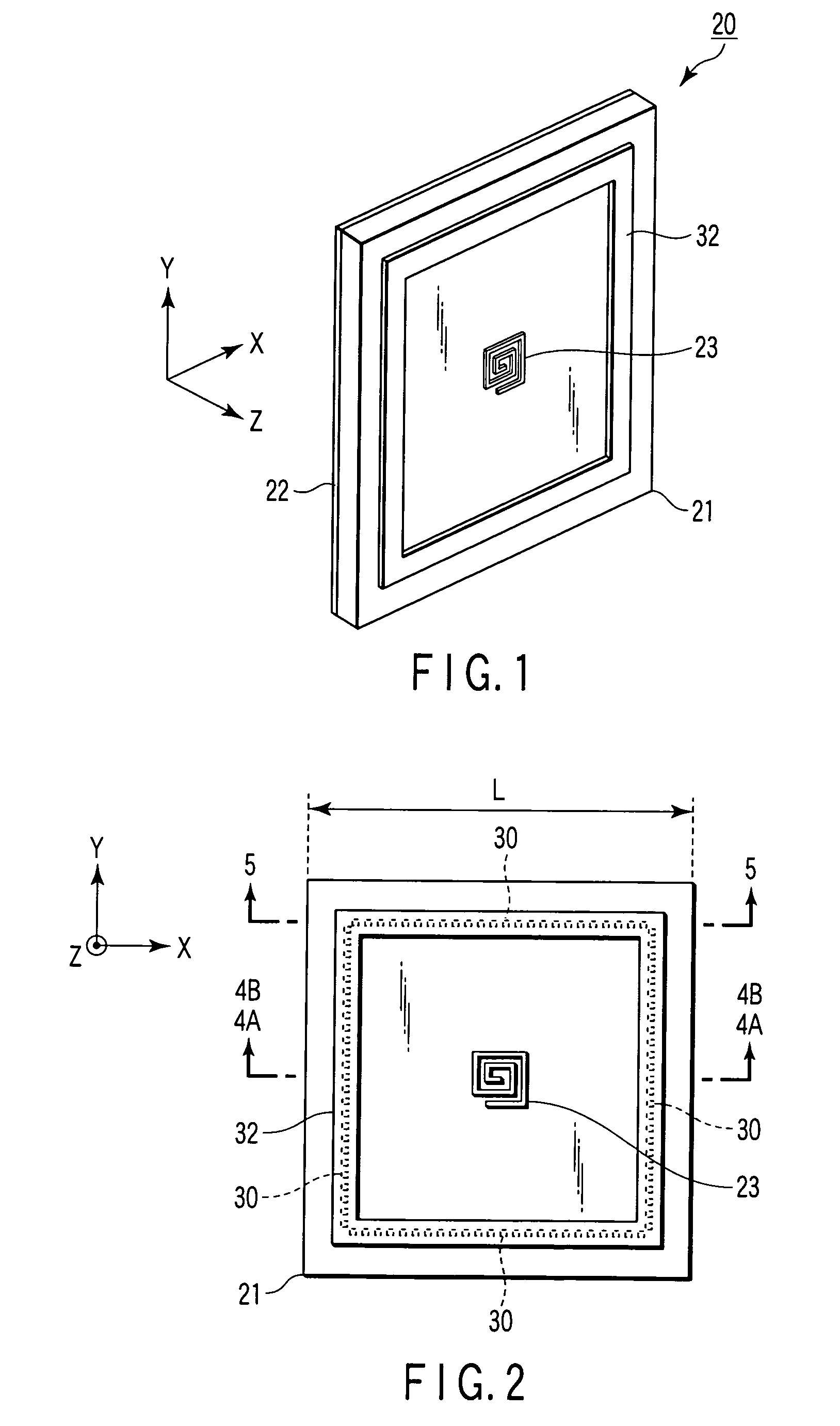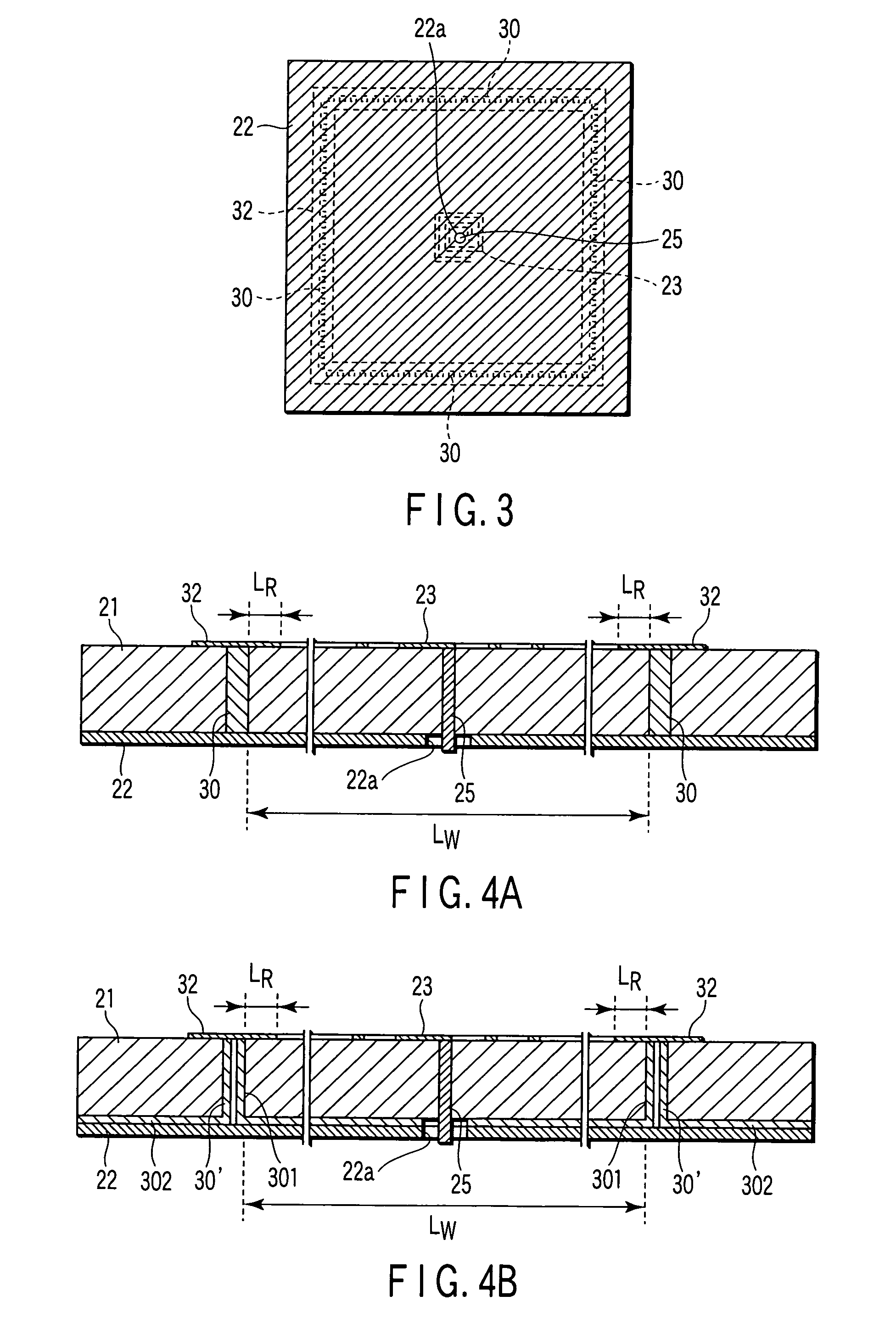Circularly Polarized Antenna and Radar Device Using the Same
a technology of circular polarization and radar, applied in the direction of polarised antenna unit combinations, resonant antennas, waveguide mouths, etc., can solve the problems of inability to obtain desired characteristics, unsuitable structurally for mass production, etc., to reduce radio interference, favorable circular polarization characteristics, favorable reflection characteristics
- Summary
- Abstract
- Description
- Claims
- Application Information
AI Technical Summary
Benefits of technology
Problems solved by technology
Method used
Image
Examples
first embodiment
[0119]FIGS. 1 to 5 show a basic structure of a circularly polarized antenna 20 according to a first embodiment to which the present invention is applied.
[0120]Namely, FIG. 1 is a perspective view for explaining a configuration of the first embodiment of the circularly polarized antenna according to the invention.
[0121]FIG. 2 is a front view for explaining the configuration of the first embodiment of the circularly polarized antenna according to the invention.
[0122]FIG. 3 is a rear view for explaining the configuration of the first embodiment of the circularly polarized antenna according to the invention.
[0123]FIG. 4A is an enlarged cross-sectional view taken along line 4A-4A of FIG. 2.
[0124]FIG. 4B is an enlarged cross-sectional view taken along line 4B-4B of FIG. 2.
[0125]FIG. 5 is an enlarged cross-sectional view taken along line 5-5 of FIG. 2.
[0126]The circularly polarized antenna according to the present invention basically has, as shown in FIGS. 1 to 5, a dielectric substrate 21...
second embodiment
[0167]In the circularly polarized antenna 20 of the above-described first embodiment, it suffices to set the above circularly polarized antenna 20 in an array when the gain required as a UWB radar or the like is insufficient, or when it is necessary to narrow a beam down.
[0168]Further, when the circularly polarized antenna is set in an array, a sequential rotation array shown in the following Non-Pat. Document 5 can be employed in which a wideband circular polarization characteristic and a wideband reflection characteristic are realized as an antenna overall by suppressing cross-polarization components.
[0169]Non-Pat. Document 5: Teshirogi, et al. “Wideband circularly polarized array antenna with sequential rotations and phase shift of elements”, Proc. of ISAP' 85, 024-3, pp. 117-120, 1985
[0170]A sequential rotation array is an array antenna with a plural number N of antenna elements having identical configuration arranged in identical plane, in which the respective antenna elements ...
third embodiment
[0212]FIG. 14 is a front view for explaining a configuration of a sequential rotation array to which a third embodiment of the circularly polarized antenna according to the present invention is applied.
[0213]As shown in FIG. 14, the circularly polarized antenna 20′ having the sequential rotation array structure to which the third embodiment of the circularly polarized antenna according to the invention is applied is configured as two sets of two-elemental sequential rotation arrays having identical configuration by the four antenna elements 23(1) to 23(4) and 23(5) to 23(8) respectively arrayed in a line vertically.
[0214]Namely, in the circularly polarized antenna 20′ shown in FIG. 14, an array angle of the antenna element 23(2) is rotated by π / 2 with respect to the antenna element 23(1), the antenna element 23(3) is made to have identical array angle as the antenna element 23(1), and the antenna element 23(4) is made to have identical array angle as the antenna element 23(2).
[0215]...
PUM
 Login to View More
Login to View More Abstract
Description
Claims
Application Information
 Login to View More
Login to View More - R&D
- Intellectual Property
- Life Sciences
- Materials
- Tech Scout
- Unparalleled Data Quality
- Higher Quality Content
- 60% Fewer Hallucinations
Browse by: Latest US Patents, China's latest patents, Technical Efficacy Thesaurus, Application Domain, Technology Topic, Popular Technical Reports.
© 2025 PatSnap. All rights reserved.Legal|Privacy policy|Modern Slavery Act Transparency Statement|Sitemap|About US| Contact US: help@patsnap.com



